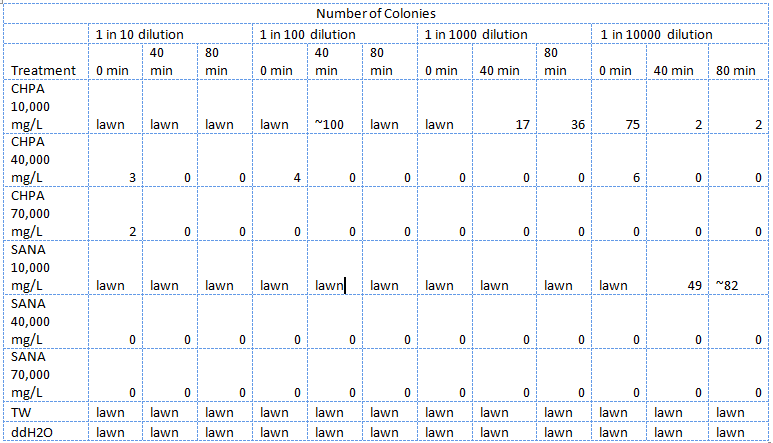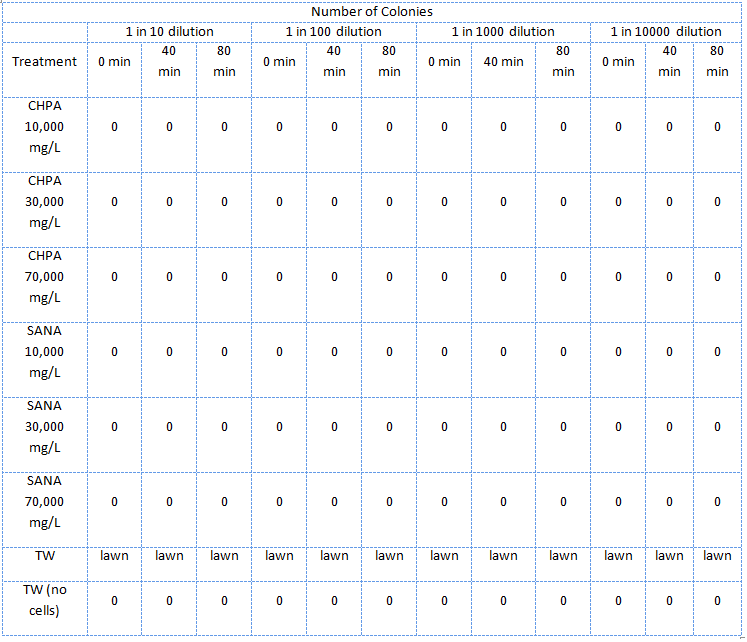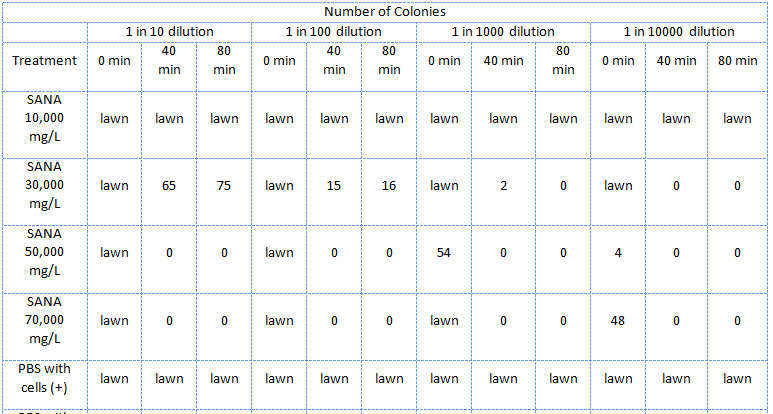Team:Calgary/Notebook/Journals/NA viability
From 2011.igem.org
| Line 27: | Line 27: | ||
</html>[[Image:UCalgary2011 MSQTable 2. second NA assay.png|thumb|610px|left|<b>Table 2.</b> Results of the second E. coli viability assay in NAs (July 5, 2011). The NAs were diluted in ddH2O, which was not pH adjusted.]]<html> | </html>[[Image:UCalgary2011 MSQTable 2. second NA assay.png|thumb|610px|left|<b>Table 2.</b> Results of the second E. coli viability assay in NAs (July 5, 2011). The NAs were diluted in ddH2O, which was not pH adjusted.]]<html> | ||
| - | </html>[[Image:UCalgary2011 MSQTable 3. third NA assay.png|thumb|610px|left|<b>Table 3.</b> Results of the third E. coli viability assay in NAs (July 22, 2011). The NAs were diluted in PBS buffer.]]<html> | + | </html>[[Image:UCalgary2011 MSQTable 3. third NA assay.png|thumb|610px|left|<b>Table 3.</b> Results of the third E. coli viability assay in NAs (July 22, 2011). The NAs were diluted in PBS buffer (pH ~7).]]<html> |
| + | |||
| + | <br></br> | ||
| + | |||
| + | <h2>Discussion</h2> | ||
| + | |||
| + | |||
</html> | </html> | ||
}} | }} | ||
Revision as of 20:46, 28 September 2011









Testing the survival and viability of E. coli in NAs

E. coli viability assays
In total three assays were carried out to assess the viability of E. coli in NAs. In the first one E. coli were treated with different concentrations of two types NAs in distilled water, tailings samples received from Dr. Gieg and distilled water. 1M NaOH was added to each f these samples bringing the pH to ~7.
In the second assay E. coli was similar to the first one except that the E. coli were treated with NA dilutions which were not pH adjusted.
In the third assay the NAs, this time only the mixture supplied by Sigma-Aldrich, were diluted in PBS (phosphate saline) buffer which kept the pH about 7.
Brief Methods:
E. coli cells were subcultured until log phase then divided into 2mL tubes and pelleted. The supernatant was removed and 2mL of the treatment was added and the cells were resuspended. Immediately at this point a 20uL samples of the mixtures were taken and diluted 10 times, 100 times, 1000 times, and finally 10 000 times. The diluted samples were then spotted on LB plates. The mixture was then placed in a 37 degree shaker to be removed when the time arose to repeat the above dilutions and plate spotting.
These plates were then incubated for the same amount of time and the number of colonies for each treatment and dilution were recorded.
Results:
Guide to the tables:
- SANA denotes Sigma-Aldrich Naphthenic Acids
- TW denotes tailings water
- CHPA denotes cyclohexane pentanoic acid
- "lawn" denotes massive growth on the plate which cannot be counted
Discussion

 "
"









